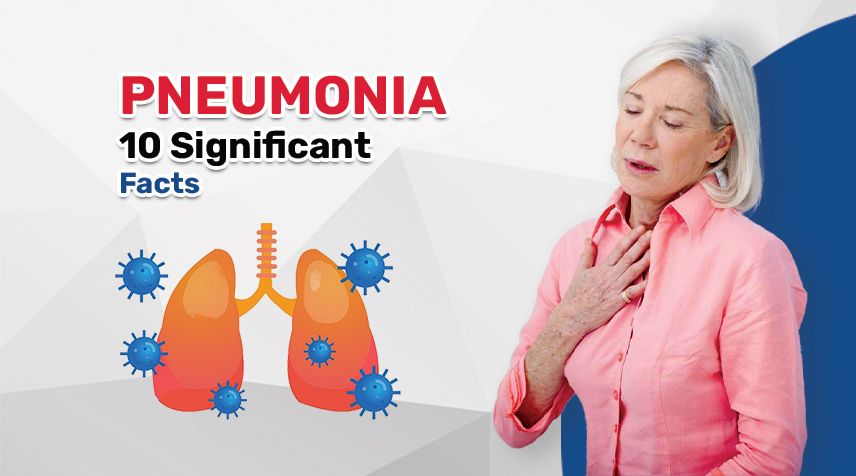Pneumonia is a dangerous, actually a deadly infection that effects the lungs, and it can attack both kids and adults. It is the on its own major infectious killer in both adults and kids, and the data shows that its annual mortality rate is around 2.5 million adults and kids universally.
India records almost 23 percent of the worldwide pneumonia burden with casualty rates reaching amid 14 and 30 percent.
The team of HealthCadre research has completed comprehensive research and gathered few extremely important facts about one of the most fatal infections across the globe “Pneumonia”. We have tried our best to share these facts with you to get a better understanding on this lethal infection. And to learn by what methods can we deal with it better and correspondingly be aware with the vital information related to this deadly infection:
Pneumonia can be instigated by a widespread variety of that are existing in the air that we respire. The infection of pneumonia consequences in inflammation in the air sacs of a person’s lung that ultimately leads to coughing along with phlegm or pus, temperature, chills, and distress breathing.
- The viral and bacterial pneumonia both are individually extremely infectious and contagious.
- Community-acquired pneumonia (CAP) is the most prevalent kind of pneumonia. CAP is one of the principally leading reasons of morbidity and mortality in our country (India) and globally and certainly amongst the most critical respiratory diseases between numerous infections triggering sepsis.
- Typical bacterial pathogens that cause CAP include Streptococcus pneumonia, Haemophilus influenza, and Moraxella catarrhalis.
- An important factor in the administration of pneumonia is the initial diagnosis of the causal pathogen established on which suitable anti-bacterial, anti-viral, or anti-fungal treatment can begin soon.
- Suitable medical history and physical examination are significant steps that must be taken before concluding a pneumonia diagnosis.
- Maximum pneumonia cases are detected by getting basic diagnostic examination that includes a chest X-ray, blood culture test, and a CT scan of the chest in several medical cases. Bronchoscopy is recommended in a certain patient’s if the early symptoms are acute or not reacting well to the antibiotics dose that are suggested by a medical doctor.
- Microbiological investigative tests with assurance are not 100 per cent reliable in detecting the elementary cause of pneumonia, and in around 40-70 per cent of pneumonia patients, the reason is never determined.
- Molecular tests such as RT-PCR detect the specific pathogen and aid to extricate amid bacterial and viral infection and few modern molecular tests as well offer information about antibiotic vulnerability. The new-fangled age RT-PCR-based molecular diagnostic kits try to discover the existence of 15-30 diverse pneumonia-causing pathogens at the same time and also offer responses in 2-3 hours contrasting the old culture techniques that takes around 3-5 days
- In maximum situations, pneumonia can be prevented by taking measures such as improving sanitation, immunizations, and suitable diet and by addressing atmospheric feature like air pollution. When it comes to averting pneumonia in kids, vaccination against HIB, pneumococcus, measles, and whooping coughing (pertussis) is extremely effective in addition to the aspects stated above.
Read Also:- Diabetes During Pregnancy
